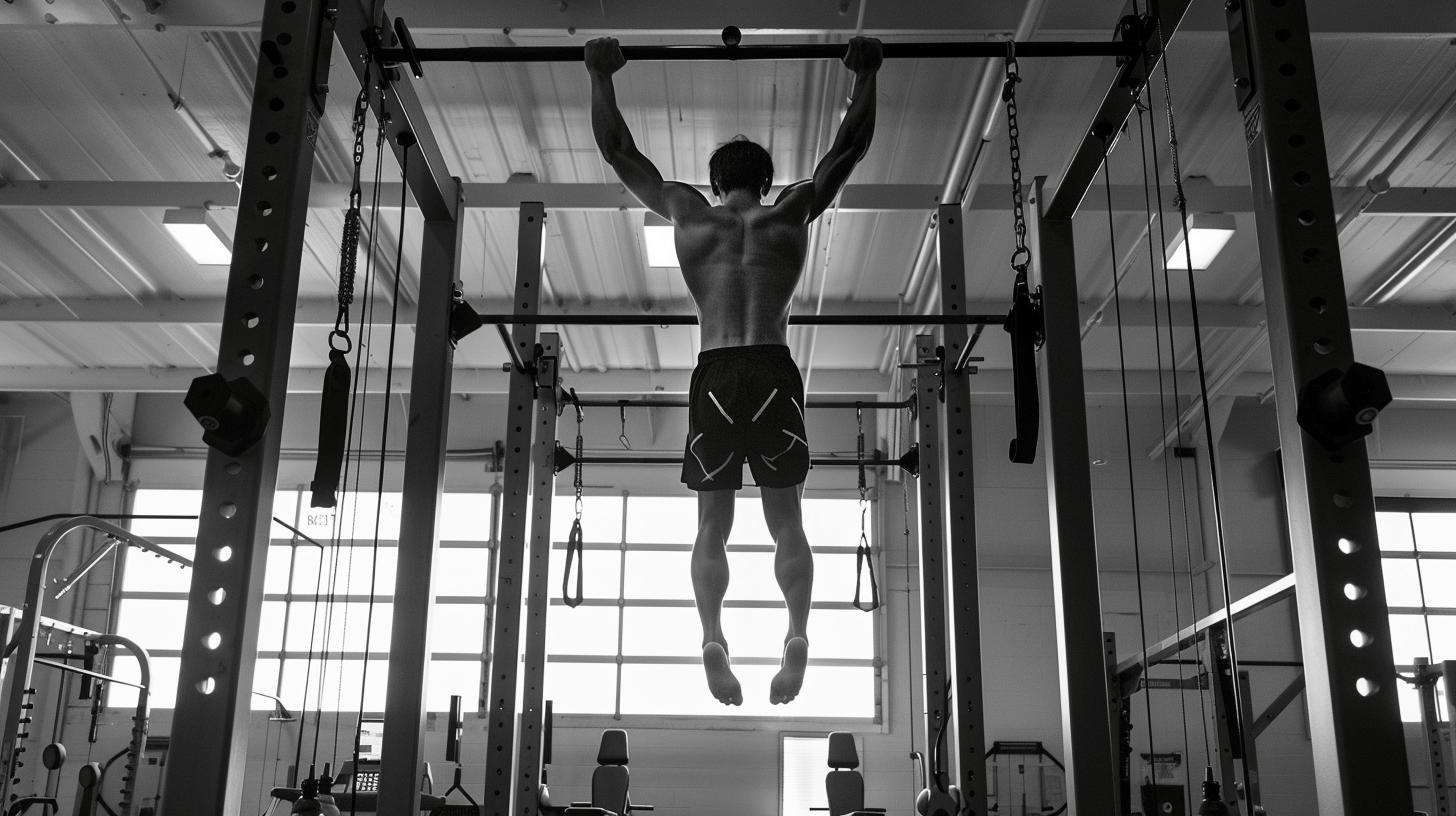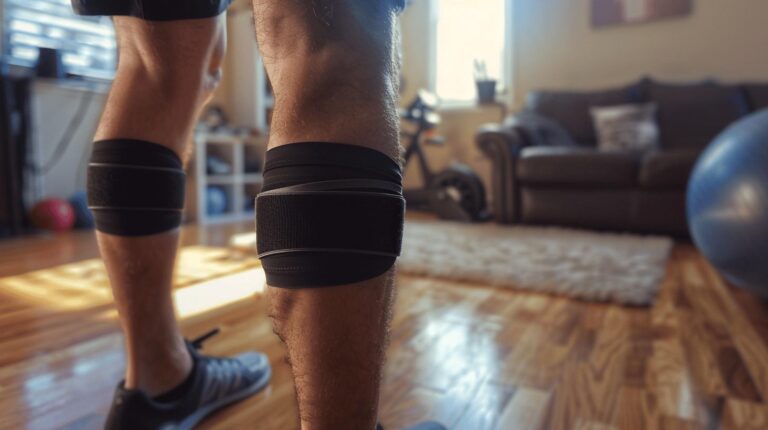An ACL injury occurs when the anterior cruciate ligament in the knee is overstretched or torn, leading to compromised knee stability and often significant pain. Rehabilitation for ACL injuries is crucial, as it aids in reducing swelling, restoring knee function, and gradually strengthening the muscles around the joint. Without thorough and early rehabilitation, individuals risk prolonged recovery times and potential future knee issues.
Starting rehabilitation early is essential to manage pain, minimise swelling, and promote healing. Initial rehab focuses on basic exercises to regain knee mobility and control. These early stages lay the foundation for more advanced strengthening exercises that are vital for a complete recovery and prevention of future injuries.
In the initial phase of ACL rehab, the primary goals are:
- Reducing knee swelling.
- Restoring full knee extension.
- Regaining quadriceps muscle control and strength.
- Improving overall knee mobility.
- Ensuring proper gait mechanics and walking without a limp.
With these foundational goals in mind, progressing to more advanced exercises becomes easier and more effective. Early and focused rehabilitation helps set the stage for a strong recovery, ultimately enabling individuals to return to their daily activities and athletic pursuits with reduced risk of re-injury.
Understanding ACL Injury and Its Rehabilitation
An ACL injury occurs when the anterior cruciate ligament in the knee is overstretched or torn. This ligament is crucial for maintaining knee stability, and its injury can significantly impact one's ability to perform everyday activities and participate in sports. Damage to the ACL often results in pain, swelling, and reduced mobility, necessitating a well-structured rehabilitation protocol.
Starting rehabilitation as soon as possible is important for managing pain and swelling. Early intervention helps to restore knee function and prevents further complications. Rehabilitation exercises focus on reducing inflammation, enhancing joint mobility, and gradually strengthening the muscles around the knee.
Initial goals of ACL rehab:
- Reduce pain and swelling
- Restore full knee extension
- Regain normal walking ability
- Strengthen the quadriceps and hamstrings
- Improve overall knee stability
As rehabilitation progresses, the focus shifts to more advanced exercises to rebuild strength and stability. Gradual progression through different phases of rehab ensures that the knee regains its full functionality. A comprehensive rehabilitation program tailored to the individual's needs is essential for a successful recovery and prevention of future injuries.
Early Stage ACL Rehabilitation Exercises

Early-stage ACL rehabilitation is crucial in the first two weeks post-surgery. During this phase, the primary goals are to minimize pain and swelling, achieve full knee extension, and normalize walking patterns. Initiating these exercises promptly can significantly impact recovery by reducing inflammation and preventing stiffness, which is vital for regaining knee function.
Key exercises in this early stage include heel slides, isometric quad contractions, and ankle pumps. These exercises are designed to gently mobilize the knee joint and strengthen the muscles around it without putting undue stress on the healing tissue. For example, heel slides help extend the knee without bearing weight, while isometric quad contractions strengthen the quadriceps while seated. Ankle pumps, performed by lying flat on the back, assist in reducing swelling and improving circulation.
Early-stage ACL rehab exercises:
- Heel Slides
- Isometric Quad Contractions
- Prone Knee Flexion
- Prone Hip Extension
- Sitting Towel Calf Stretch
- Ankle Pumps
- Passive Knee Extensions
Exercise Description Heel Slides Extends the knee without bearing weight Isometric Quad Contractions Strengthens quads while seated Prone Knee Flexion Performed while lying on the stomach Prone Hip Extension Similar to prone knee flexion but without bending the knee Sitting Towel Calf Stretch Requires a towel and a place to sit Ankle Pumps Starts by lying flat on the back with legs outstretched These exercises, when performed consistently, help in controlling pain and swelling, maintaining muscle strength, and restoring range of motion. They lay the foundation for more advanced rehabilitation stages and ultimately contribute to a successful recovery and return to normal activity levels.
Mid-Stage ACL Strengthening Exercises
Mid-stage ACL rehabilitation is critical for rebuilding muscle strength, enhancing movement training, and beginning fitness reconditioning. This phase typically spans from the third to the sixth week post-injury or surgery. Strengthening the muscles around the knee, particularly the quadriceps, hamstrings, and glutes, helps to restore stability and support the joint during activities. Movement training in this stage focuses on improving balance, coordination, and functional mobility, which are essential for returning to daily activities and sports.
Key exercises in the mid-stage of ACL rehab include bodyweight squats, split squats, step-downs, sliders, and bridges. Bodyweight squats and split squats primarily target the quads and glutes, improving lower body strength and stability. Step-downs are effective for enhancing balance and control, while sliders and bridges focus on hamstring strength, which is crucial for knee joint support. These exercises not only build muscle but also improve neuromuscular coordination, which is vital for preventing future injuries.
Mid-Stage ACL Rehab Exercises
- Bodyweight Squat
- Split Squat
- Step-Down
- Slider
- Bridge
| Exercise | Target Muscle Group |
|---|---|
| Bodyweight Squat | Quads, Glutes |
| Split Squat | Quads, Glutes |
| Step-Down | Quads, Glutes |
| Slider | Hamstrings |
| Bridge | Hamstrings, Glutes |
These mid-stage exercises are designed to progressively challenge the knee and surrounding musculature, fostering a gradual return to pre-injury levels of function. By incorporating these exercises into a structured rehabilitation program, individuals can achieve significant improvements in strength, stability, and overall knee health.
Advanced ACL Strengthening Exercises and Return to Sport

Advanced ACL rehabilitation is essential for athletes aiming to return to high-level performance. Developing full range of motion, strength, muscle mass, and power is crucial during this phase. Advanced exercises focus on enhancing power, agility, and sport-specific skills, which are necessary for a safe and effective return to sports. Plyometric exercises, including both bilateral and unilateral movements, help in building explosive strength and improving neuromuscular control. Vertical jumps and sport-specific drills further prepare the athlete for the dynamic demands of their sport.
Criteria for safely returning to sports include meeting specific strength and functional benchmarks. Athletes must demonstrate adequate strength in the quadriceps and hamstrings, as well as overall lower body power. Functional assessments, such as single-leg hop tests and agility drills, are used to evaluate readiness for the high-intensity movements required in sports. Ensuring that these criteria are met helps to minimize the risk of re-injury and supports a successful transition back to competitive play.
Advanced ACL Rehab Exercises
- Plyometrics
- Unilateral Plyometrics
- Vertical Jumps
- Deceleration Drills
- Sport-Specific Drills
- Strength Assessments
Exercise Purpose Plyometrics Develop power and agility Unilateral Plyometrics Enhance single-leg strength and stability Vertical Jumps Improve explosive power Deceleration Drills Enhance control and injury prevention Sport-Specific Drills Prepare for sport-specific movements Strength Assessments Ensure readiness for high-intensity activities These advanced exercises and assessments are designed to challenge the athlete’s knee and overall physical capabilities, ensuring they are prepared for the demands of their sport. By following a structured and progressive rehabilitation program, athletes can optimize their recovery and reduce the likelihood of re-injury.
Preventing ACL Injuries: Exercises and Tips
Preventing ACL injuries is critical for maintaining knee health and avoiding the long recovery process associated with such injuries. Strengthening the leg muscles, particularly those supporting the knee joint, is essential. This not only enhances stability but also reduces the likelihood of sustaining an ACL injury during physical activities.
Effective ACL injury prevention exercises include resistance band workouts, balance exercises, and proper technique training for movements that place stress on the knee. Resistance band workouts help in building muscle strength without placing undue stress on the joints. Balance exercises improve proprioception, which is the body's ability to sense its position in space, thus enhancing stability. Proper technique training ensures that movements are performed safely, minimizing the risk of injury. Females are at a higher risk of ACL injuries due to anatomical and hormonal differences and should follow specialized prevention programs tailored to their needs.
ACL Injury Prevention Exercises
- Resistance Band Lateral Walks
- Single-Leg Balance Drills
- Hamstring Curls with Stability Ball
- Box Jumps with Soft Landing
- Proper Landing Techniques Training
Incorporating these exercises into a regular fitness routine can significantly reduce the risk of ACL injuries. Consistency is key, as regular practice helps in building the necessary strength and stability to protect the knee joint during high-impact activities.
In conclusion, incorporating ACL injury strengthening exercises is essential for a comprehensive rehabilitation process. These exercises facilitate recovery, improve knee stability, and enhance overall leg strength. From early-stage rehab focusing on pain and swelling reduction to advanced exercises tailored for athletes, targeted movements ensure steady progress toward recovery. Implementing these structured exercise protocols diligently can significantly improve functionality and reduce the risk of recurrent injuries. Through a committed approach to rehabilitation, individuals can achieve optimal recovery and safely resume their active lifestyles.
FAQ
How do you strengthen an ACL injury?
To strengthen an ACL injury, focus on exercises that improve knee stability and build muscle strength around the joint. These include isometric quad contractions, heel slides, and straight leg raises.
How do I make my ACL ligaments stronger?
Strengthening ACL ligaments involves consistent rehabilitation exercises such as squats, lunges, hamstring curls, and balance training. These exercises support the knee joint and enhance overall stability.
Can ACL heal on by exercise?
An ACL cannot heal completely on its own through exercise. However, targeted rehabilitation exercises can improve knee function and strengthen surrounding muscles to compensate for the injury.
How to strengthen quads with a torn ACL?
Strengthening quads with a torn ACL involves exercises like isometric quad contractions, straight leg raises, and mini-squats. These exercises enhance quad strength without putting excessive strain on the knee.
What exercises should be avoided with a torn ACL?
Avoid high-impact activities and exercises that involve twisting or pivoting, such as running, jumping, and deep squats. These movements can exacerbate the injury.
What are the initial goals of ACL rehab?
Initial goals of ACL rehab include:
- Reducing swelling and inflammation.
- Regaining full range of motion.
- Restoring normal walking pattern.
- Improving muscle control around the knee.
- Managing pain effectively.
What exercises are included in early-stage ACL rehab?
Early-stage ACL rehab exercises typically include:
- Heel Slides
- Isometric Quad Contractions
- Ankle Pumps
- Prone Knee Flexion
- Prone Hip Extension
- Sitting Towel Calf Stretch
- Leg Raises
What are mid-stage ACL rehab exercises?
Mid-stage ACL rehab exercises focus on muscle strengthening and movement training. Key exercises include:
- Bodyweight Squats
- Split Squats
- Step-Downs
- Hamstring Sliders
- Bridges
What are advanced ACL strengthening exercises?
Advanced ACL rehab exercises include:
- Plyometrics
- Unilateral Plyometrics
- Vertical Jumps
- Deceleration Drills
- Sport-Specific Drills
- Strength Assessments
These exercises prepare athletes for a safe return to high-intensity activities.
How can you prevent ACL injuries?
Prevent ACL injuries by strengthening leg muscles, especially those around the knee. Effective exercises include:
- Resistance Band Workouts
- Balance Exercises
- Proper Technique Training
- Jumping Drills
- Flexibility Exercises
Females should follow specialized prevention programs due to higher risk.

